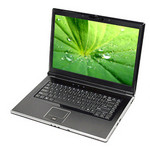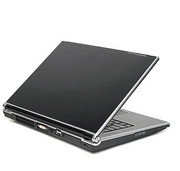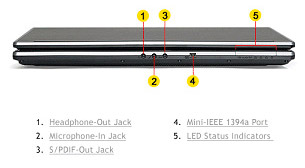Pioneer Dreambook M86
Specifications

Price comparison
Average of 1 scores (from 3 reviews)
Reviews for the Pioneer Dreambook M86
Source: ITNews Australia
 Archive.org version
Archive.org versionIncredibly powerful laptop system, with a few small issues that hold it back from true glory.
Single Review, online available, Medium, Date: 07/17/2009
Rating: Total score: 83% price: 83% performance: 100% features: 67%
Source: PC Authority
 Archive.org version
Archive.org versionPioneer Computers is an odd beast. At one time, whitebox laptop manufacturers were common in Australia, but Pioneer Computers (not to be confused with Pioneer home entertainment) is the last one remaining (unless you count Kogan). We don't think it's worth the price, but as a high-performance laptop, it's got a lot to offer. You can, however, choose which of the performance components you really need, configuring your M86 to prices ranging from $2200 up to our $4699 beast. For flexibility, that's hard to beat.
Single Review, online available, Medium, Date: 07/10/2009
Rating: price: 40% performance: 80%
Source: PC Authority
 Archive.org version
Archive.org versionWe've seen a few powerhouse laptops in our labs, but even we weren't entirely prepared for the M86. Pioneer's range includes everything from supercheap 7in netbooks through to SLI-enabled desktop-processor specificed beasts, and when we were offered a system, we plumped for a decently specified high-end system. As a high-performance laptop, it's got a lot to offer - we just wish it had a touch more style.
Leistung 80
Single Review, online available, Short, Date: 05/08/2009
performance: 80%
Comment
NVIDIA GeForce GTX 260M:
The Nvidia GeForce GTX 260M is essentially a higher clocked GeForce 9800M GTX based on the G92b core built under a 55nm manufacturing process. Because of the architectural difference, the 260M is less powerful (and quite dissimilar) to the similarly named desktop GeForce GTX 260.
Modern games should be playable with these graphics cards at low settings and resolutions. Casual gamers may be happy with these cards.
» Further information can be found in our Comparison of Mobile Graphics Cards and the corresponding Benchmark List.
Intel Core 2 Duo: This is the Core Duo and Core Solo successor with a longer pipeline and 5-20% more speed without more power consumption. As an addition to the Core Duo design there exists a fourth decoder, an amplified SSE-unit and an additional arithmetical logical unit (ALU).
The Core 2 Duo for laptops is identical to the desktop Core 2 Duo processors but the notebook-processors work with lower voltages (0.95 to 1188 Volt) and a lower Frontside bus clock (1066 vs 667 MHz). The performance of equally clocked notebooks is 20-25% lower than Desktop PCs because of the lower Frontside bus clock and the slower hard disks.
T9600:
High-end dual core CPU and similar to the Core 2 Duo P9700 but with a higher power consumption (35 W versus 28 W). Should be sufficient for all games of 2009.
» Further information can be found in our Comparison of Mobile Processsors.
















